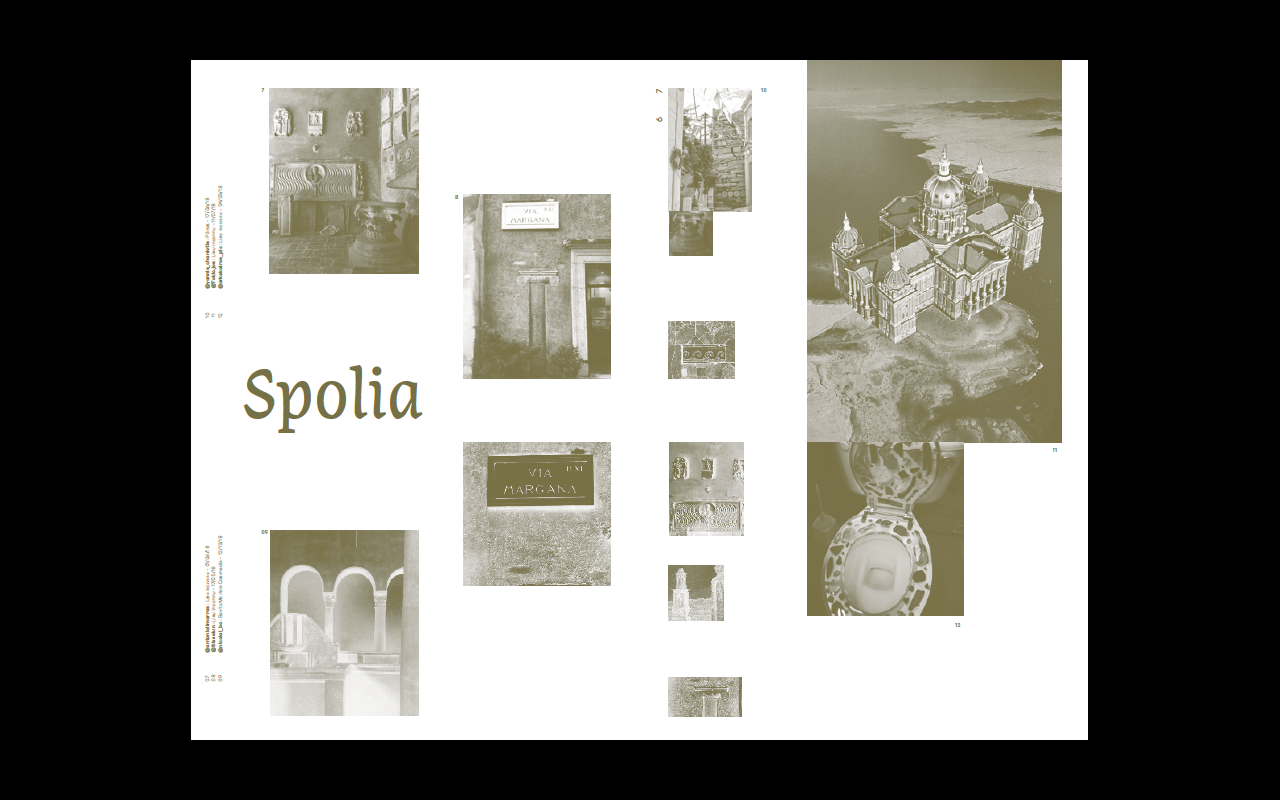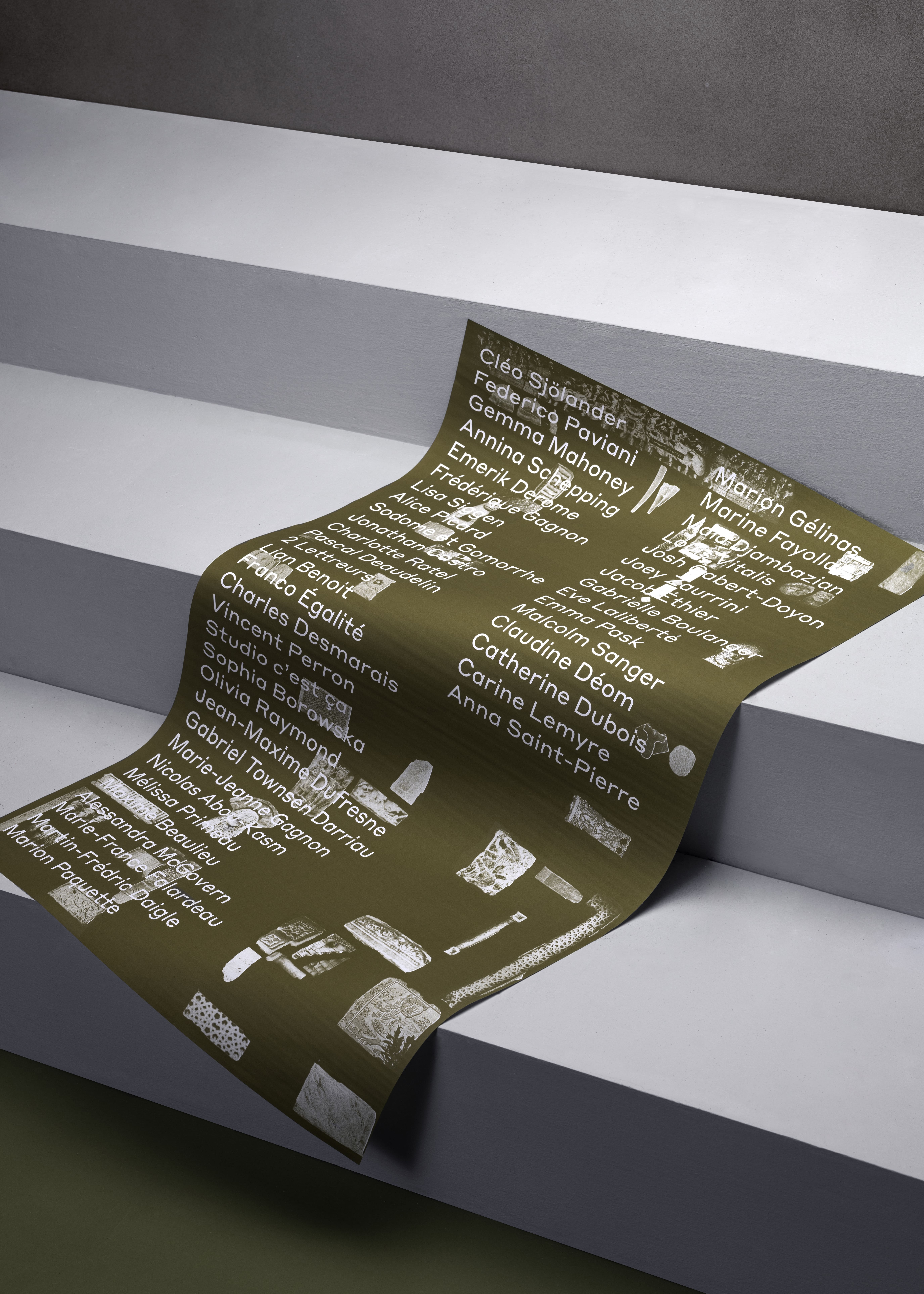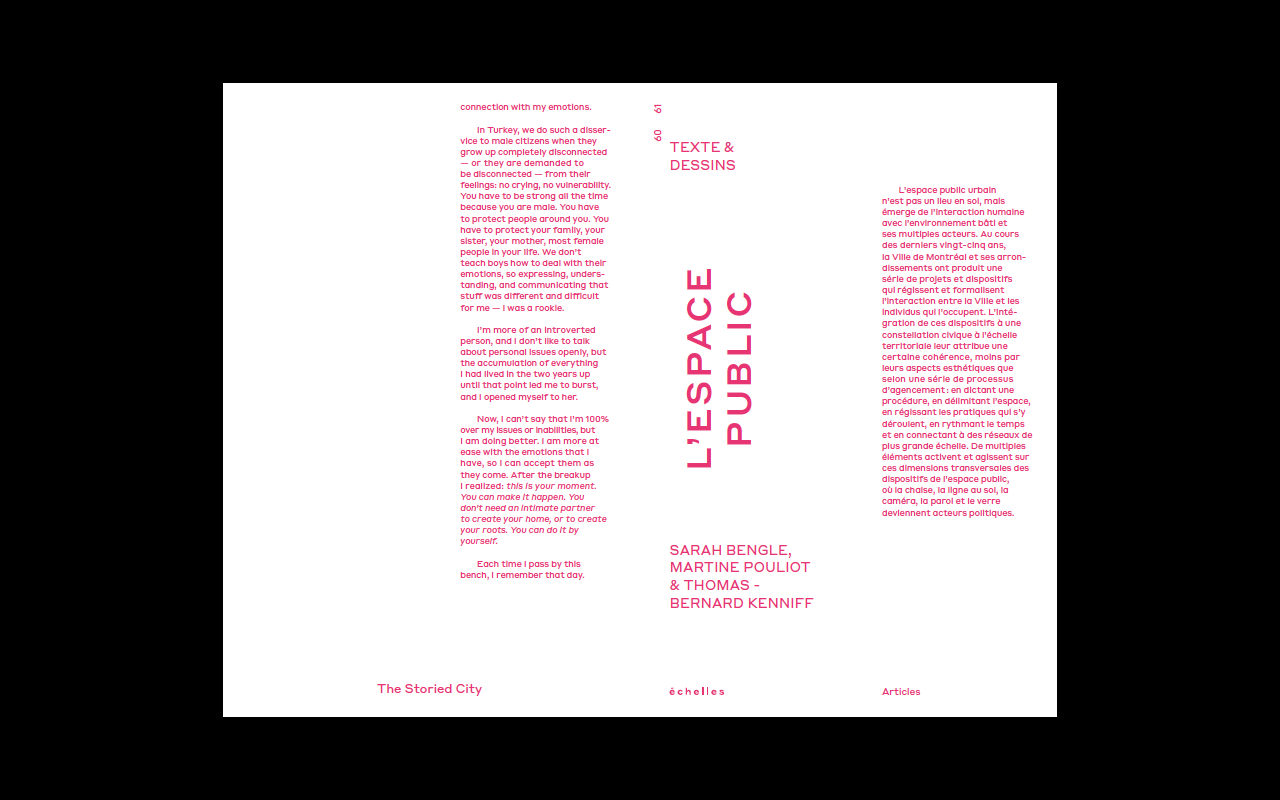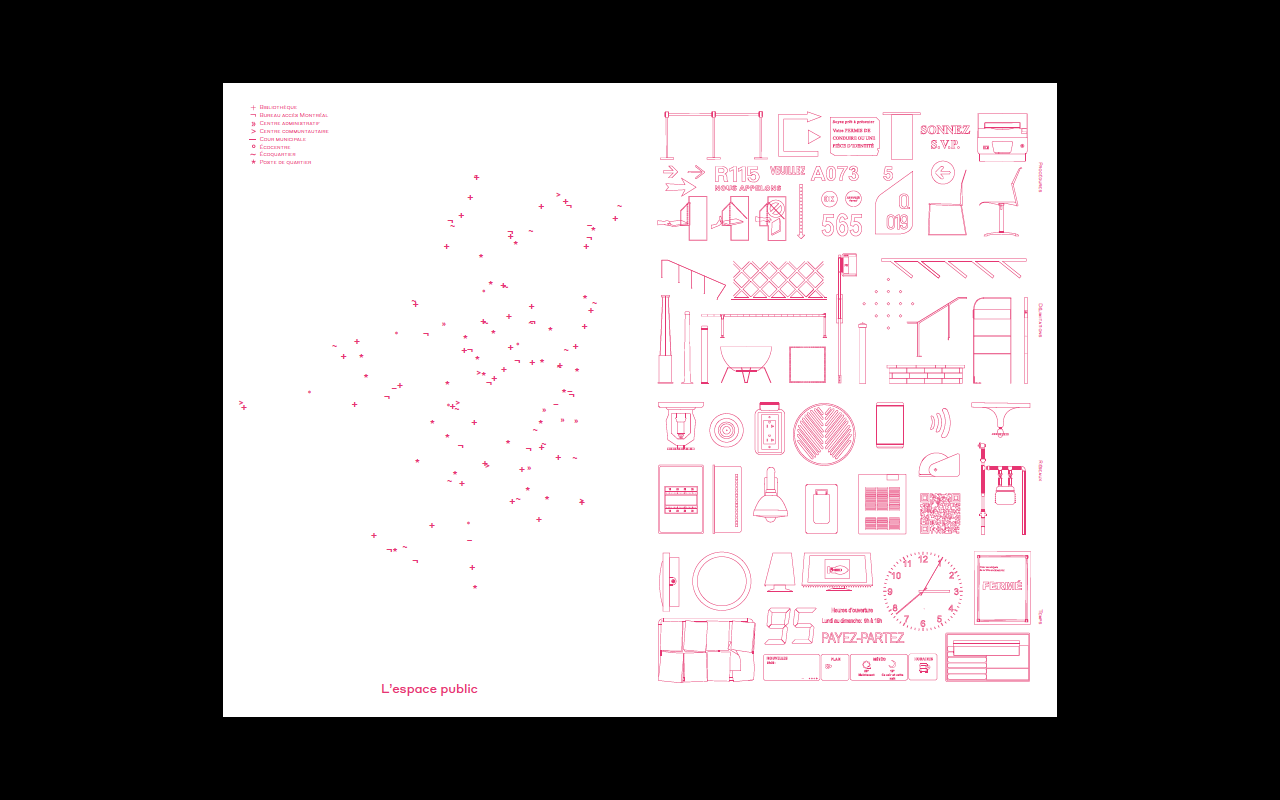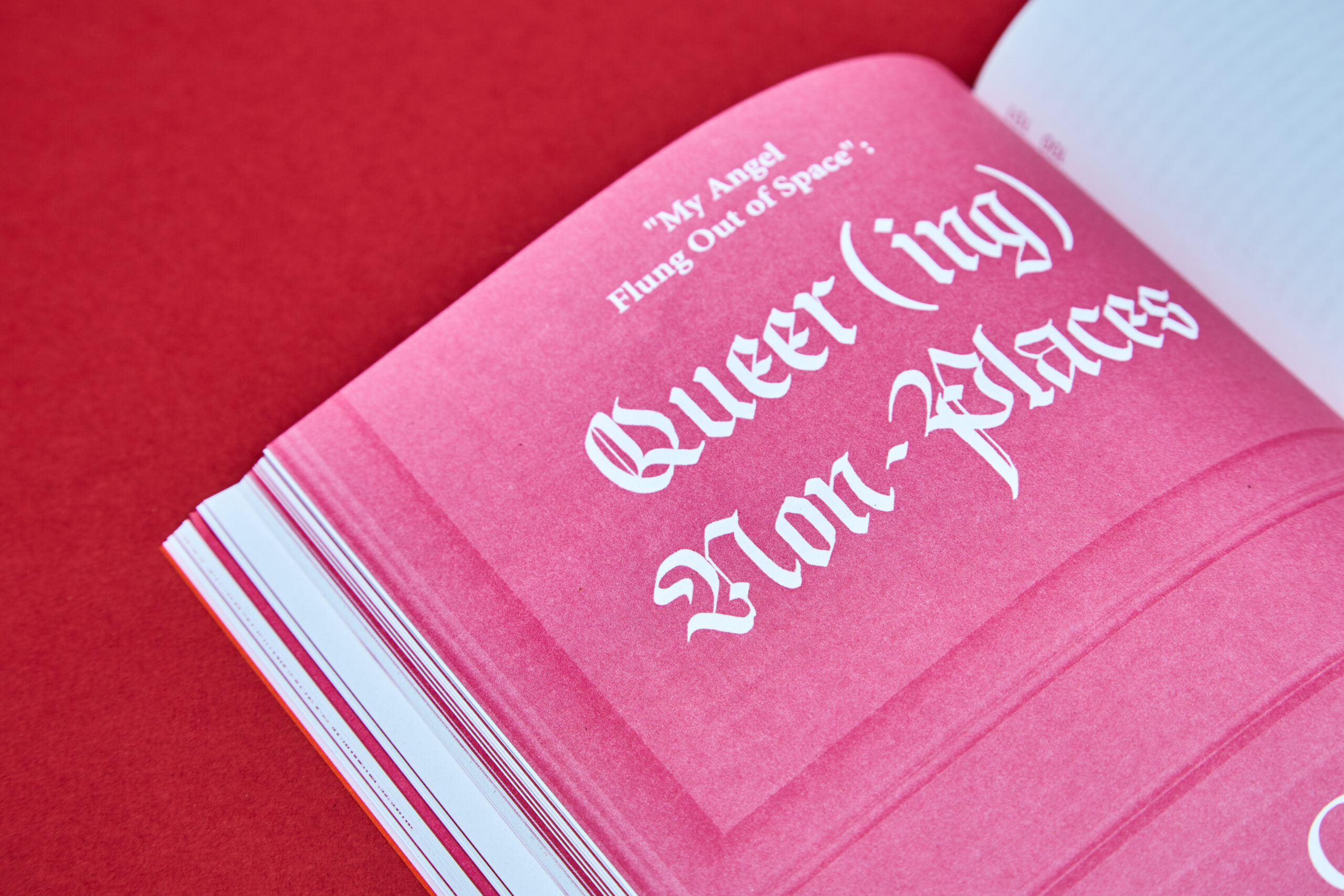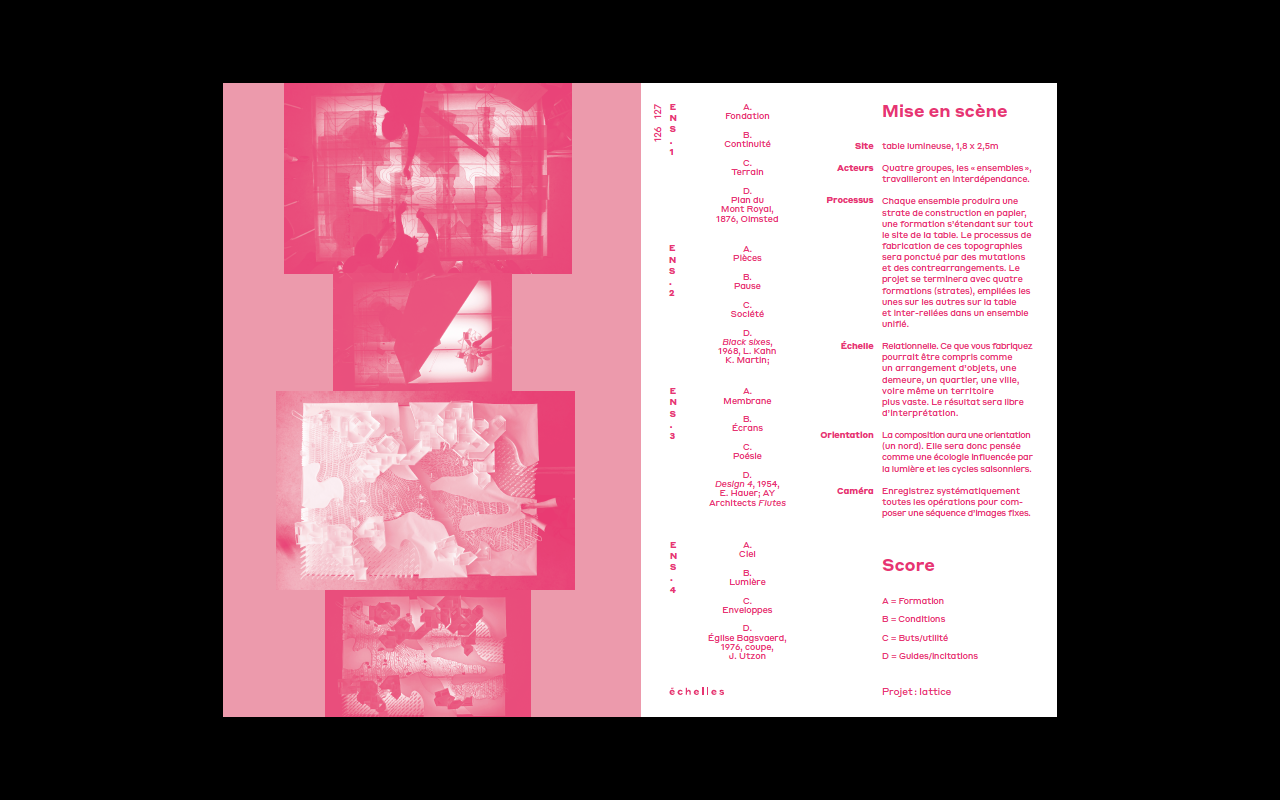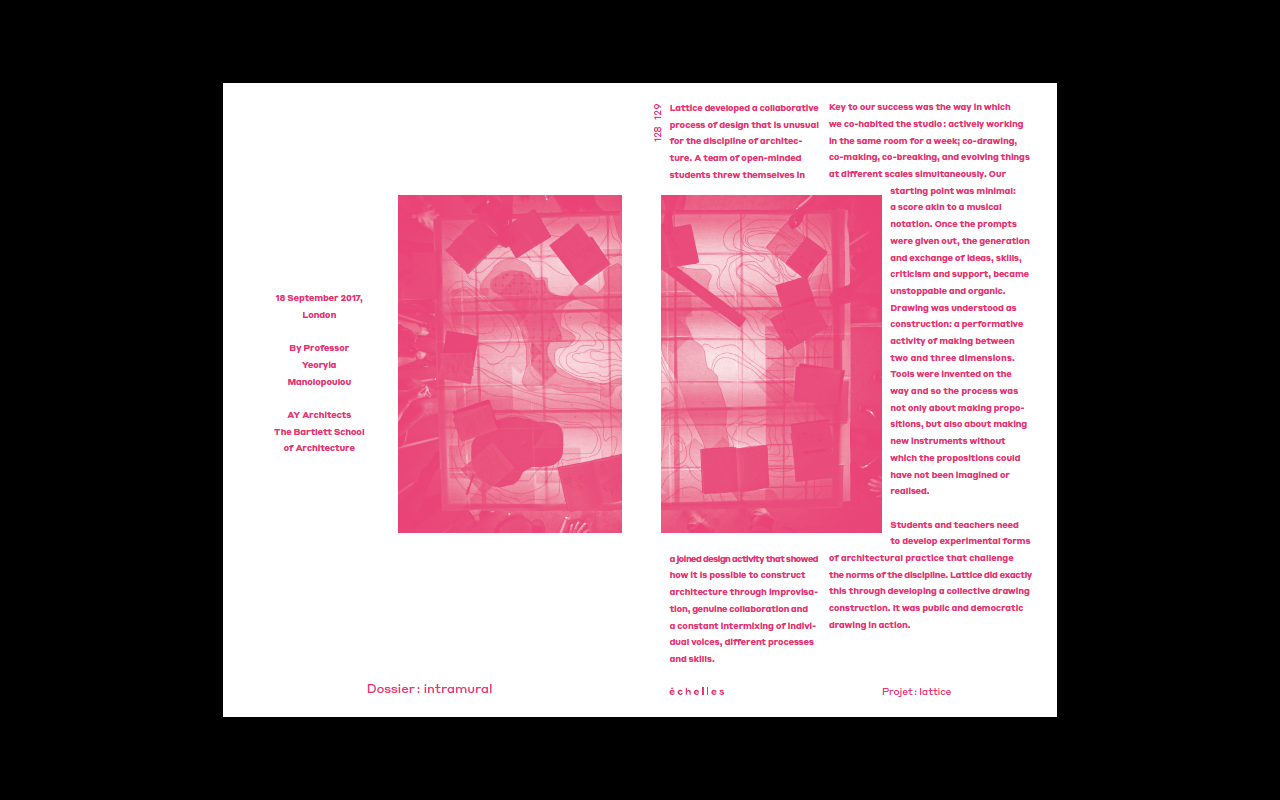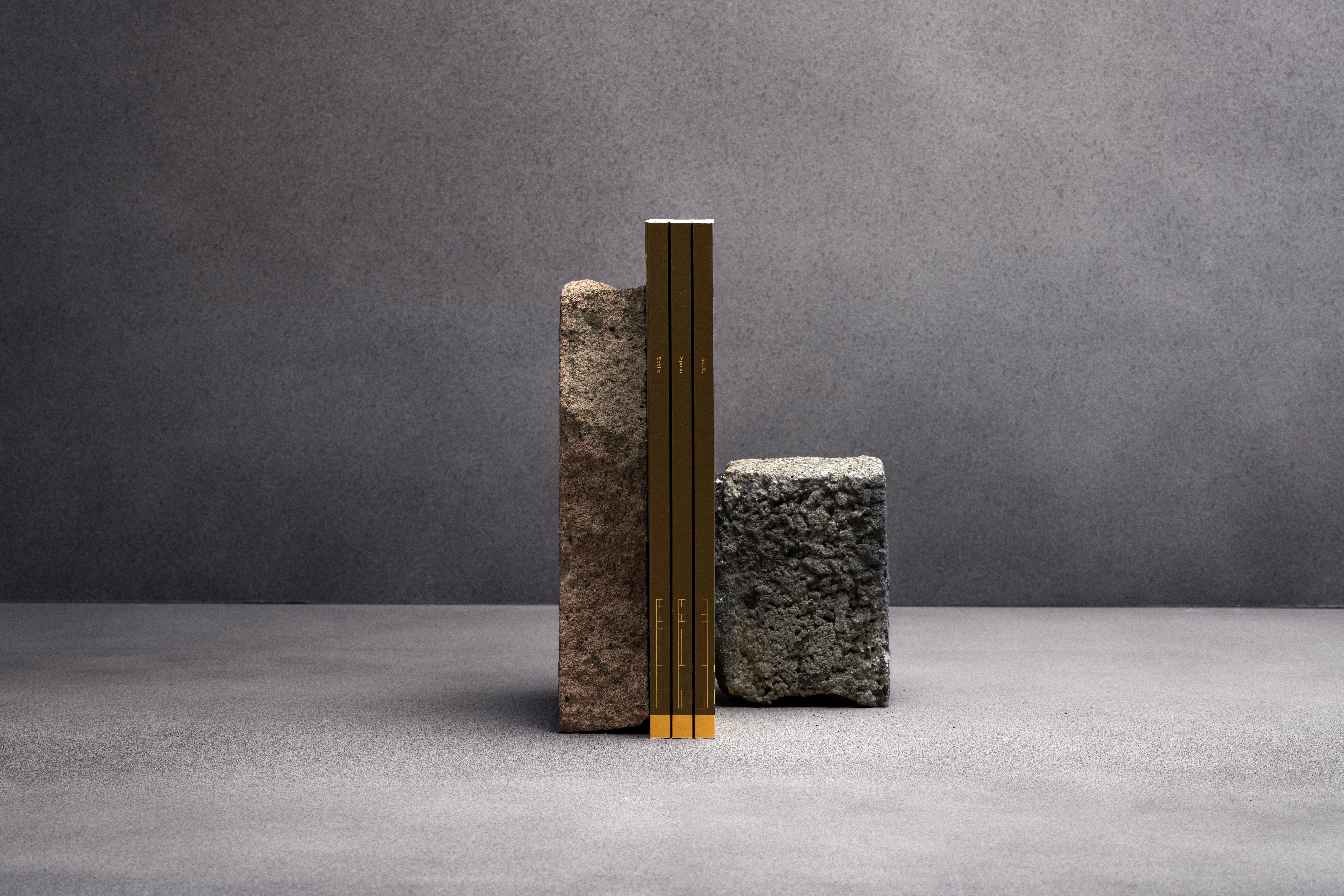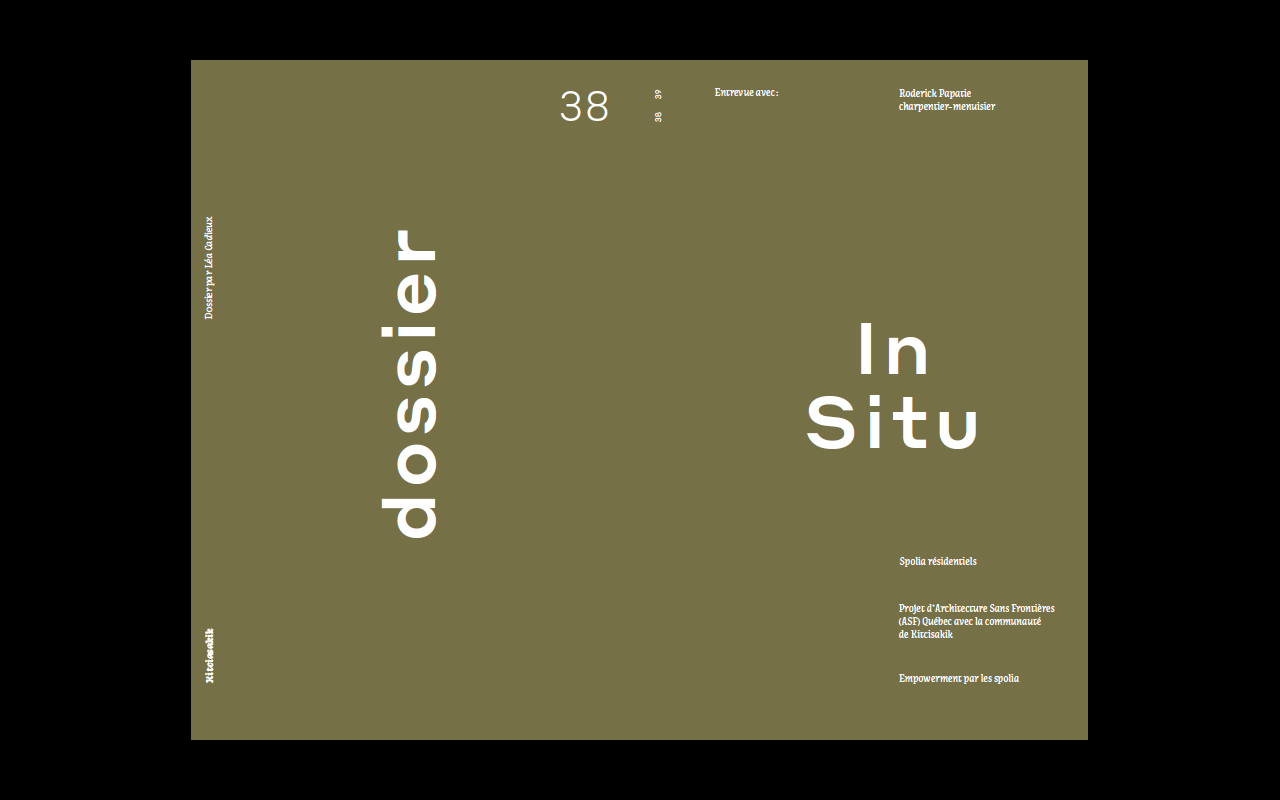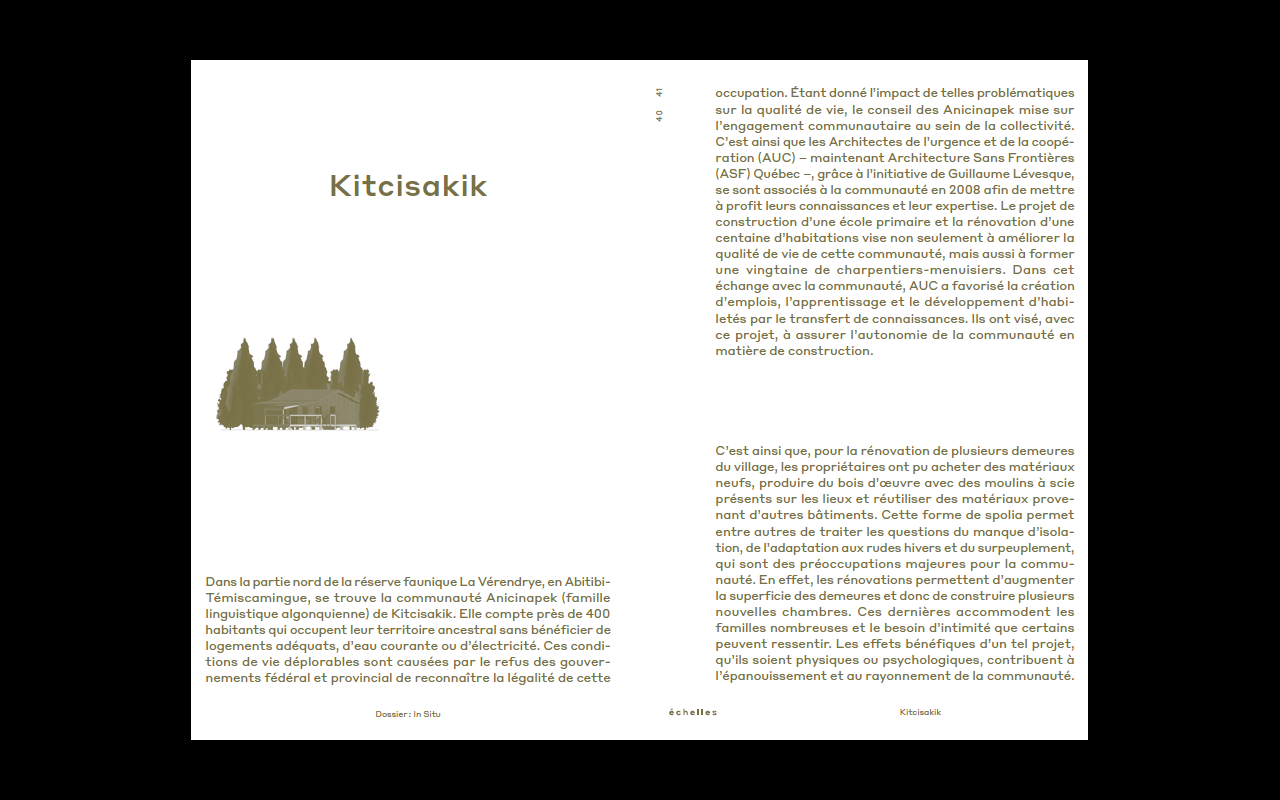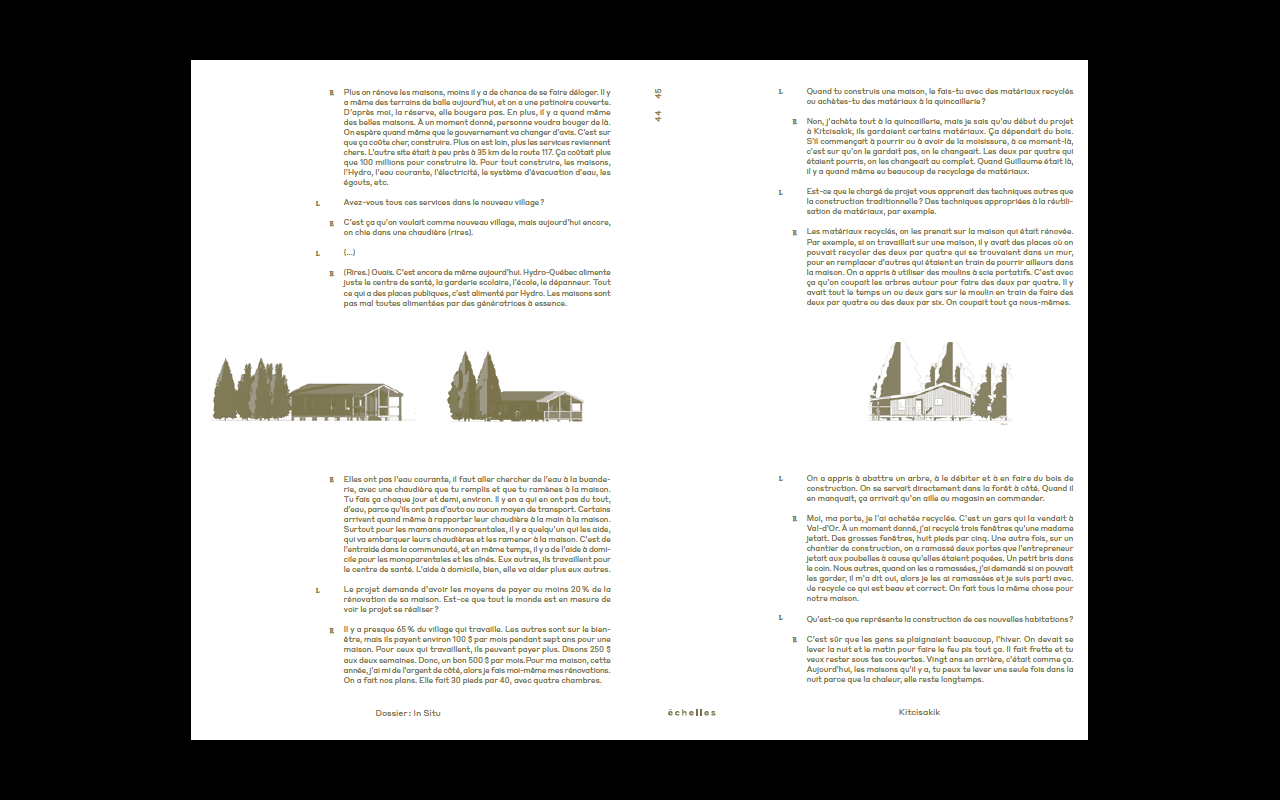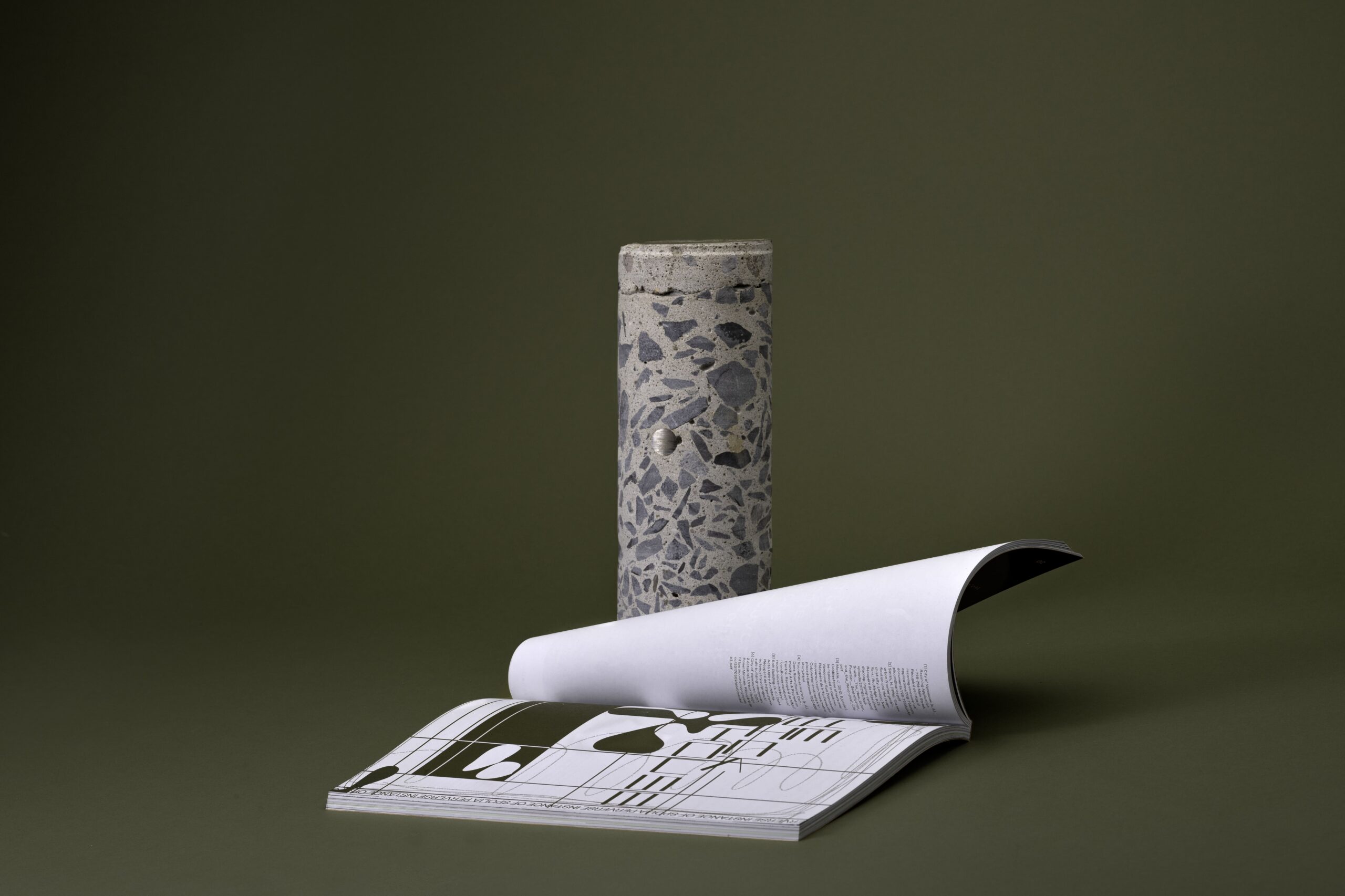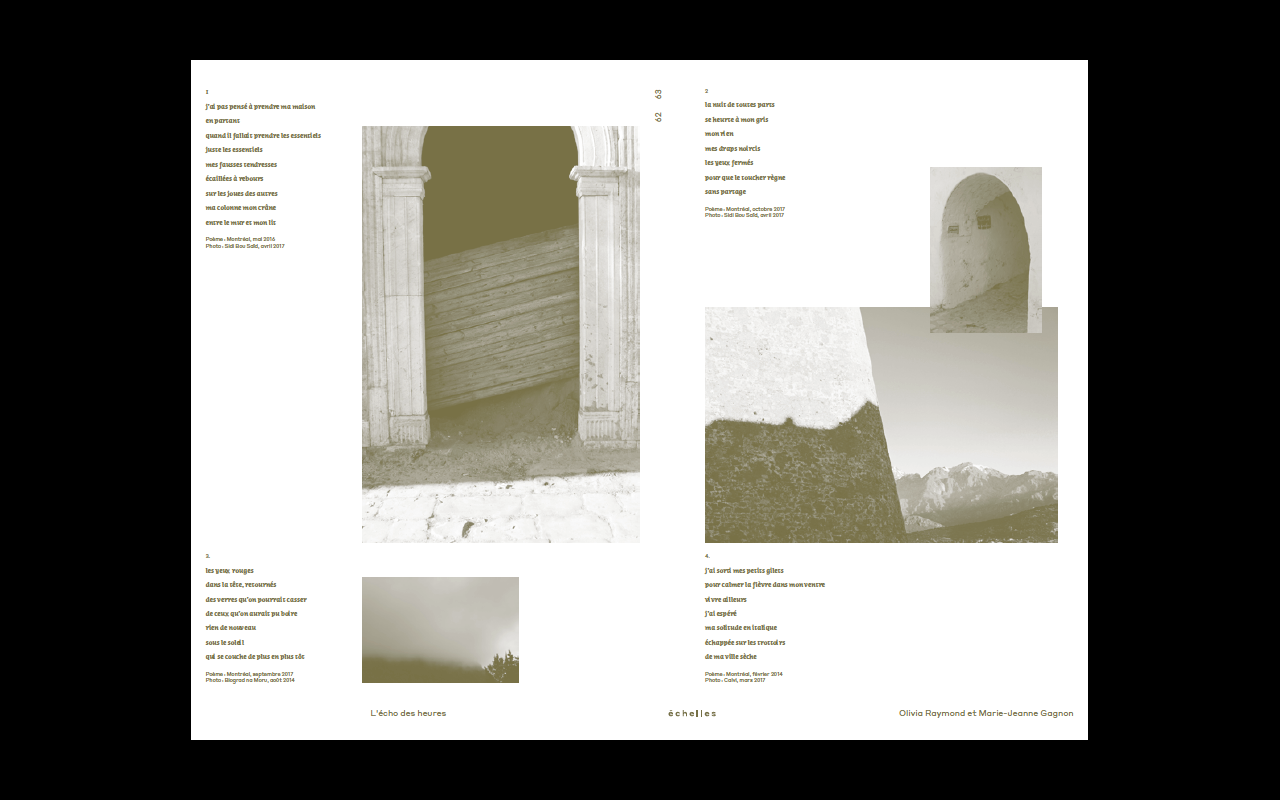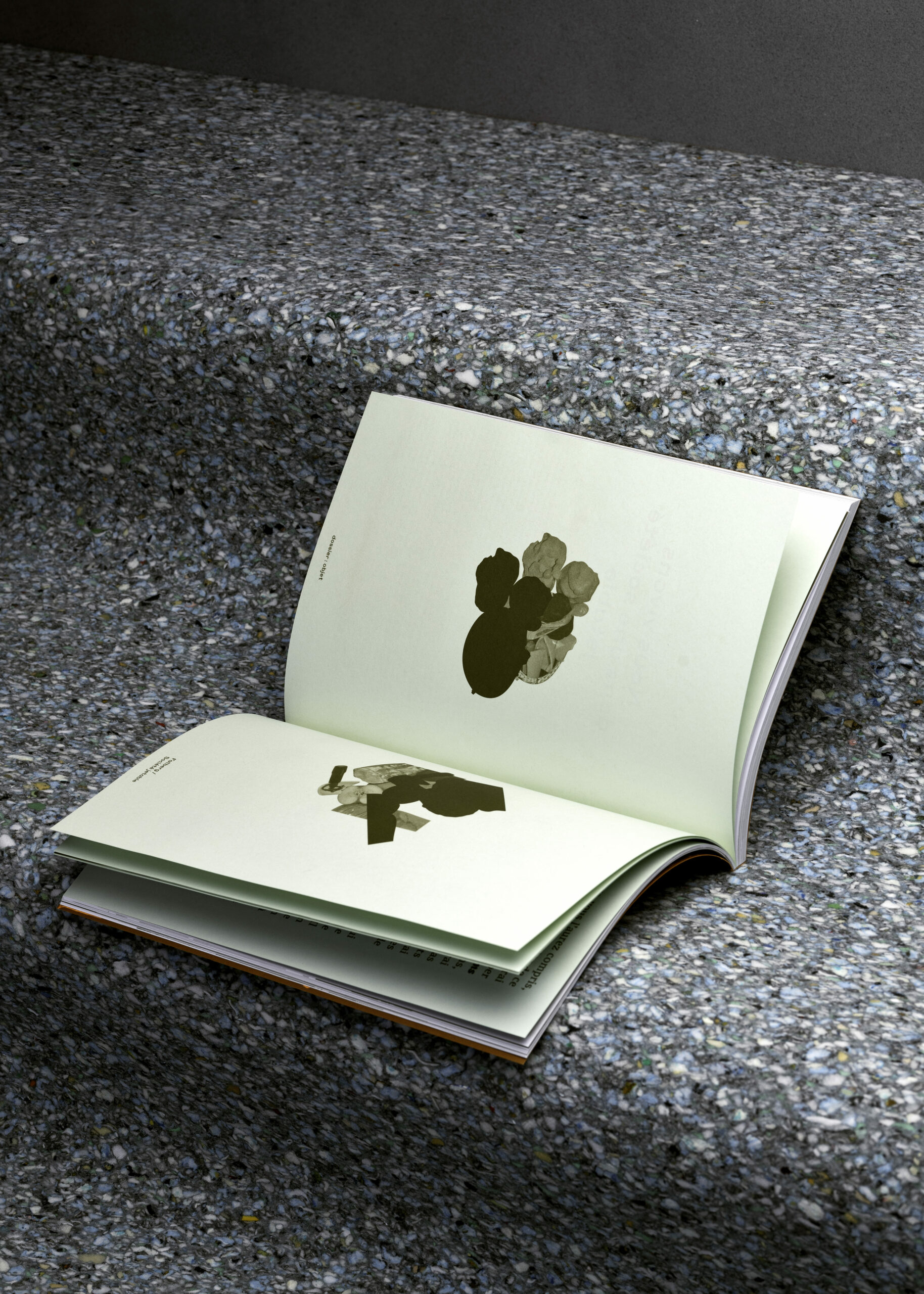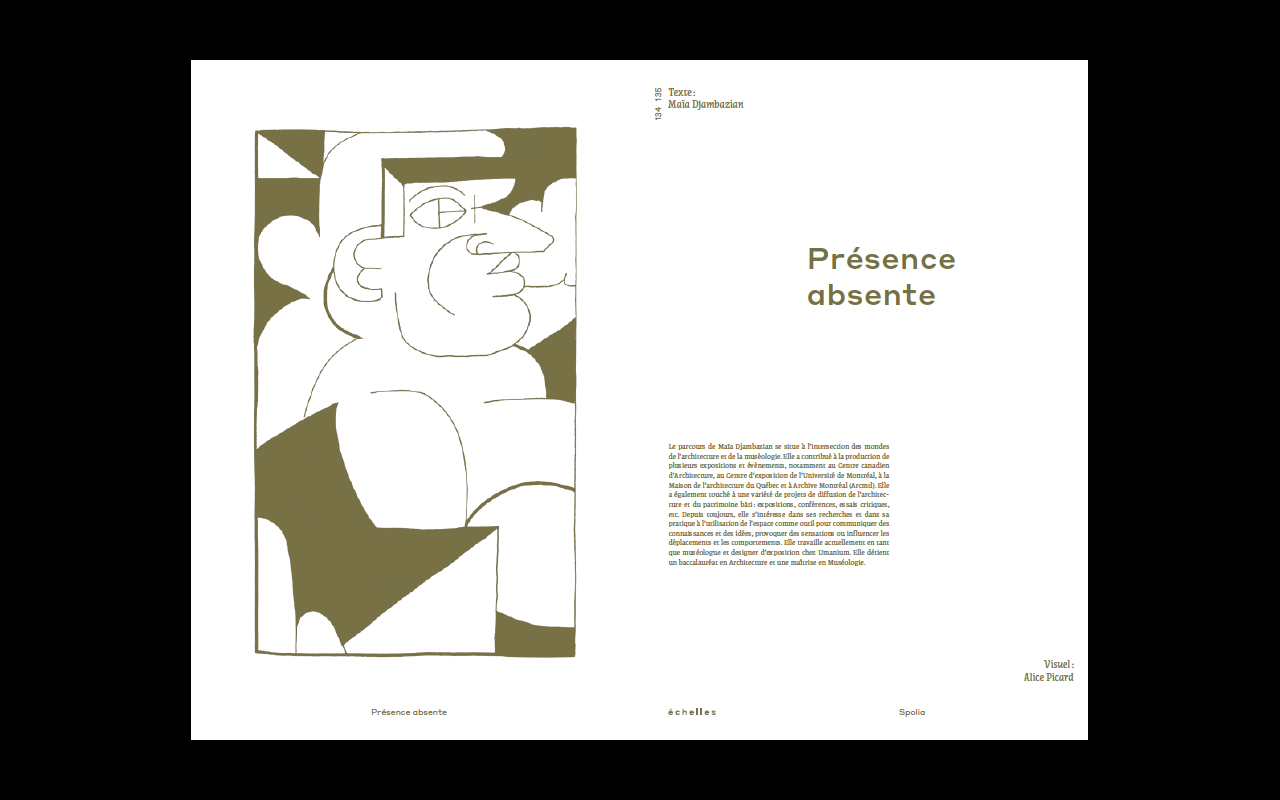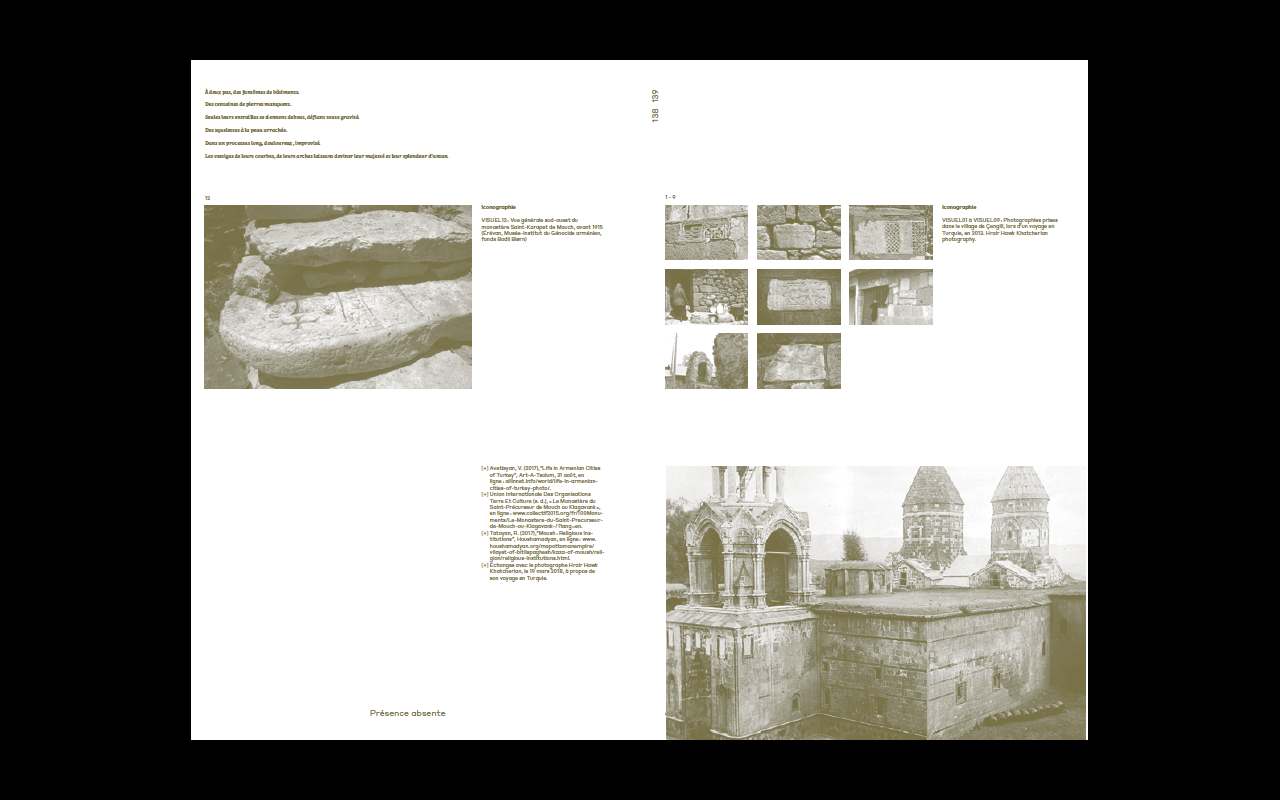Échelles
Échelles is a platform for sharing and reflecting on environmental design.
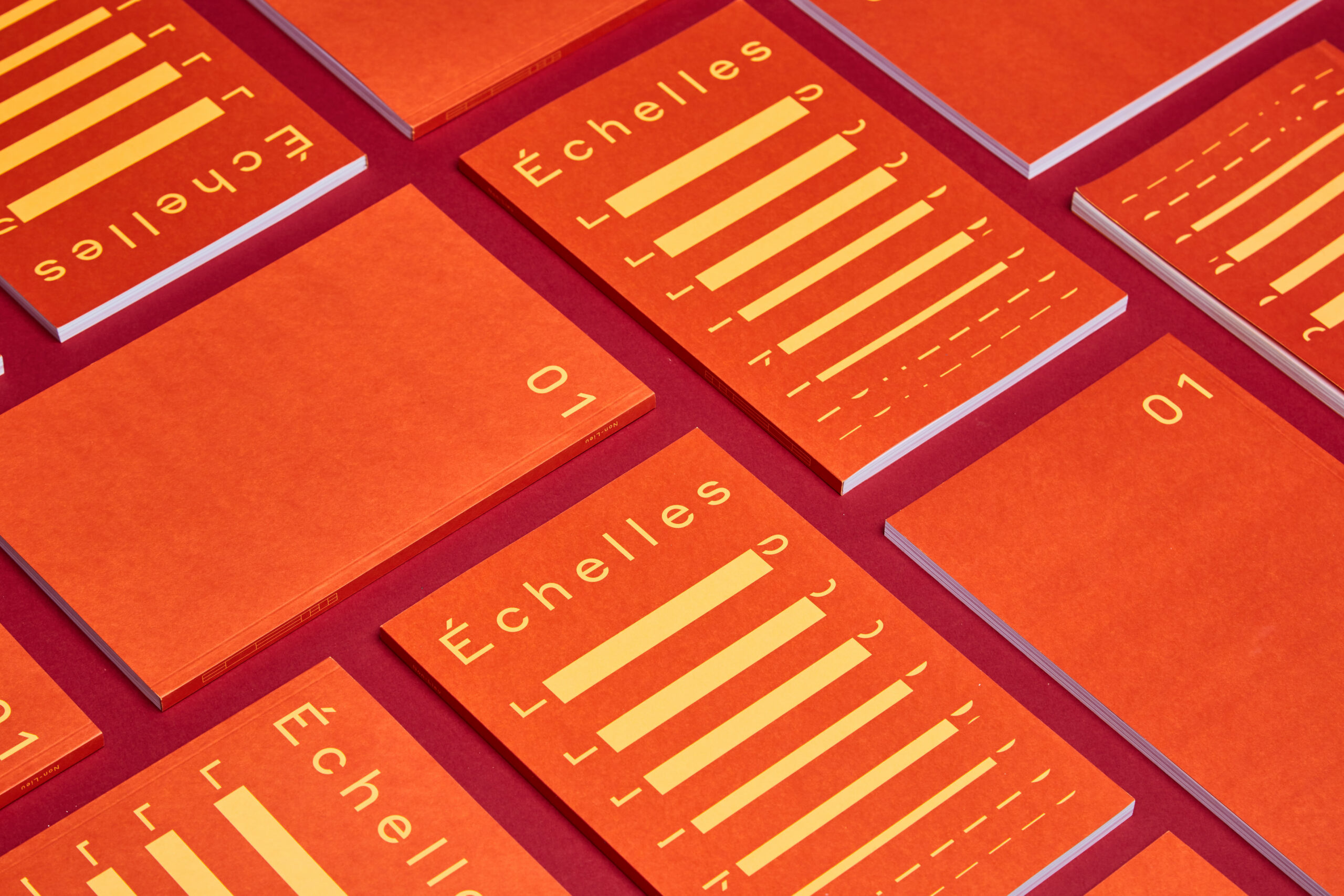
Échelles is an editorial collective made up of five designers: Joanie Brisebois, Mila Broomberg, Léa Cadieux, Marion Henry, and Clara Letourneux.
The project came into being at the UQAM Design Pavilion, but our ambitions reach far beyond the institution’s walls. Échelles was born out of a desire to create an interdisciplinary platform for Environmental Design, presenting work from voices as diverse as the scales of design it touches upon.
The publication plays with the limits of and between these scales, looking to bridge the gap between different design practices by exploring the artistic, historical, social, and political implications of design.
Échelles is an annual publication comprising essays, criticism, stories, interviews, conversations and reflections about the built environment.
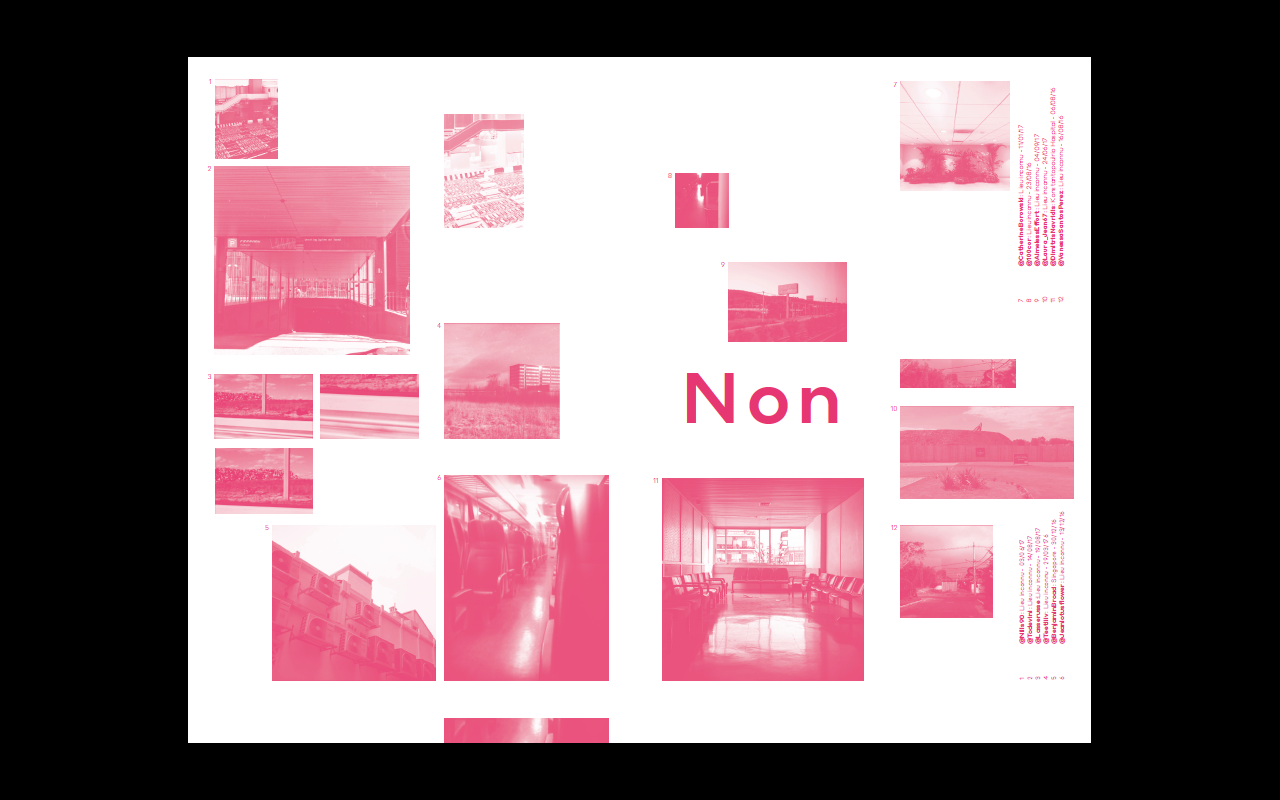
For the first edition of Échelles, we explore at the Non-Place. Coined by Marc Augé in his book “Non-Places: Introduction to an Anthropology of Supermodernity” (1995), ‘If place can be defined as relational, historical and concerned with identity, then a space which cannot be defined as relational, or historical, or concerned with identity will be a non-place. Deprived of identity, history, and urban relationships, Non-Places are transit spaces (airports, stations), standardized spaces (supermarkets, hotels), solely functional spaces (gas stations, parking lots). Our only relationship with these spaces must be contractual, asserted by a purchase or a booking.
In understanding Marc-Augé’s Non-Place, there’s a lot of collateral reading to be done. His work is informed by the writings of Claude Levi-Strauss, Marcel Mauss and Émile Durkheim, Michel de Certeau, Charles Baudelaire, Karl Marx, and Henri Lefebvre. Defining the Non-Place is a contentious activity, though it’s nomenclature originates in scholarly circles, it can be inhabited, activated, articulated, or analyzed by academics and untrained citizens alike.
The Non-Place’s qualities reveal themselves differently to its many users. To some, Non-Places are indeterminate zones, to be passed through en route to a ‘real’ destination. To others, they are enforcers of routine and of structure, and to few, the Non-Place may even provide an address, a temporary shelter from the outside world.
In an era of socio-economic changes of globalization, of new transport, communication and technology, dealing with global issues such as climate change, decolonization, refugees and terrorism, our mobile generation has the potential to transcend spatial limitations and interact with the Non-Place in ways never before possible.
The Non-Place chronicles a collective memory of the city, and carries with it traumas of history, of politics, of control. While these places lack relationships, history and identity, they simultaneously propose opportunities for new and unexpected realities. Through the empirical, practical, experimental and imaginary work of our collaborators, Échelles explores the potential of the Non-Place in order to understand the role, purpose, and implications of the Non-Place in our lives.

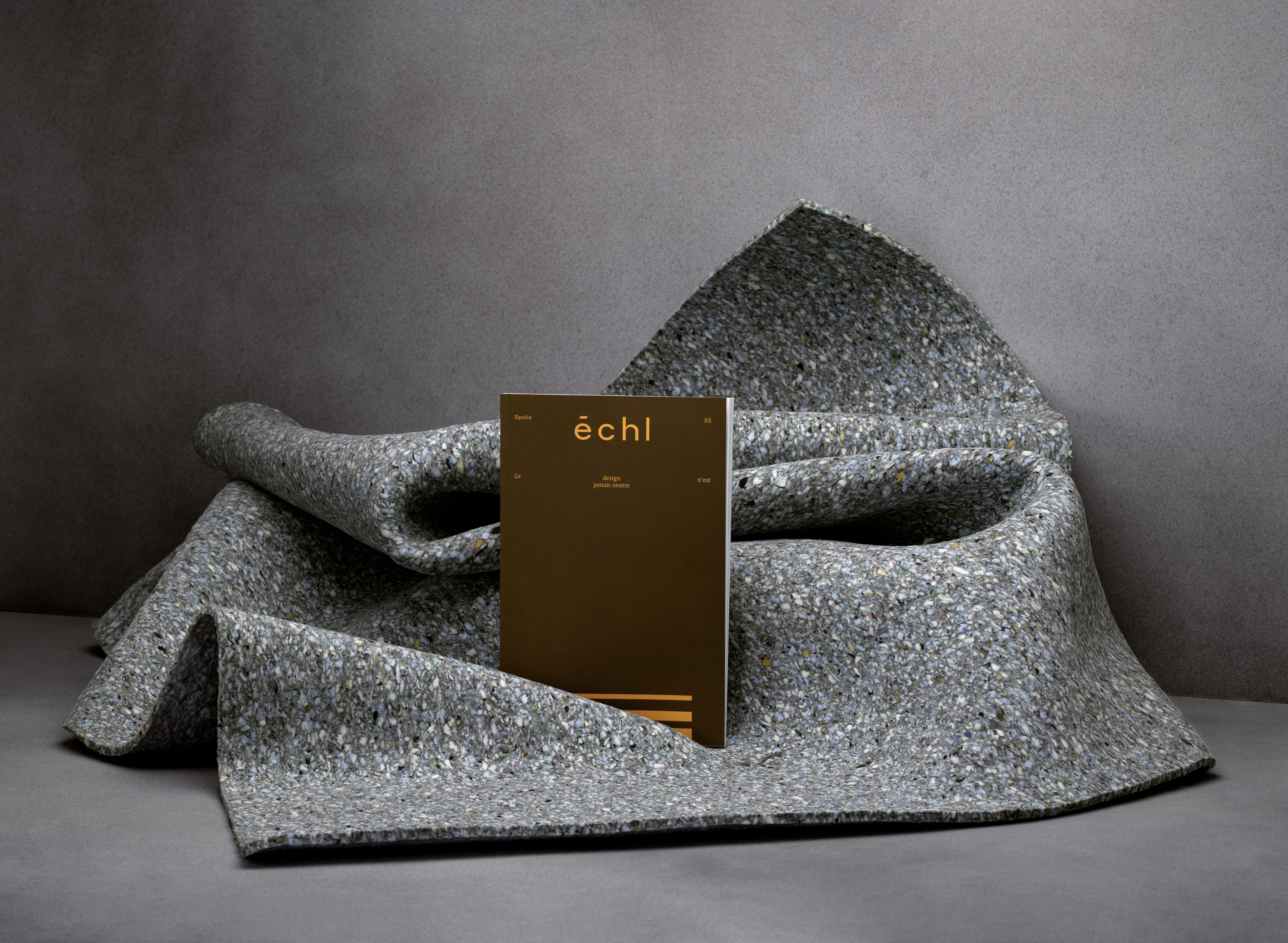
In a figurative sense, patchwork is an eclectic and disparate assemblage whose elements seem, at first glance, to be incompatible. Although seemingly discordant, it is high time to recognize the subtle coherence that emerges from diverse, yet intentional ensembles. What meaning(s) could those who consciously assemble such collages wish to impart to us ?
Sonny Assu (1975, British Columbia), an interdisciplinary artist of the Ligwilda’xw Kwakwaka’wakw nation, reinfranchises reproductions of famous paintings from canadian art history through superimpositions of traditional north-western iconography1. In this way, the artist actualises his heritage by claiming a latent legitimacy, all the while questioning the western settler mythology2. Through inverting power relations, a true autonomy of identity can begin to operate. Sonny Assu undertakes this with humour, creating subversively manipulative games which denounce existing dynamics of oppression ; this is ludic self-determination.
This second edition of Échelles is a critical exploration of the phenomenon of spolia, which implicates material interventions as well as immaterial manifestations. It is also — and perhaps primarily — an invitation to step back and address design with humanist priorities. How can we maintain human beings as centrally located within discussions and preoccupations concerning the built environment ? How can we be likewise placed at the nexus of digital space ? Imagine an infinitude of possibilities for spoliation, all continuously mutable. To explore in a mode of virtual reality is an opportunity to valorize alternative parallel outcomes, which may be societal, constructive, political or in any other way cultural.
Échelles is dressed in its finest threads of critique and opposition, outfitted by those who shock and inspire by flouting fashionable convention. Existing codes are the threads and fabric from which we stitch our own rules. Architecture is stripped bare and held to account at every scale, from raw material to the city itself. The following pages are constellated with mosaics that offer a rethinking of the status quo. What is at stake is the potential for a new equity. Certain pages suggest a reading of history wherein voices once silenced are from here on out heard. Others, in poetic form, counterbalance more rational analyses of spolia.
To make a tabula rasa our of our surroundings is as devastating as maintaining only a passive relationship to heritage. When the city transforms into a negation of its own history, and the lives of those who inhabit it, the resulting identity is generic, impersonal, and disconnected. However— as much as it may be a source of influence, the past should not act as constraint. This is what spolia permits : that the past be nuanced and contextualized, in a creative practice where the spirit of a place acts as a backdrop.
With this second edition of Échelles, we propose to you a first, fundamental finding : the act of deliberate spoliation is an act of emancipation.
